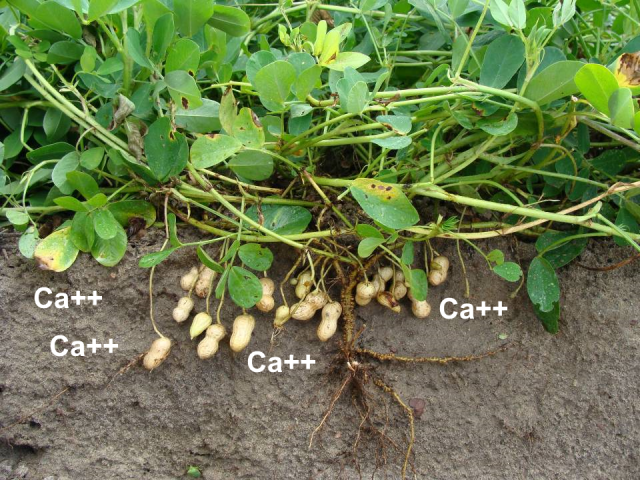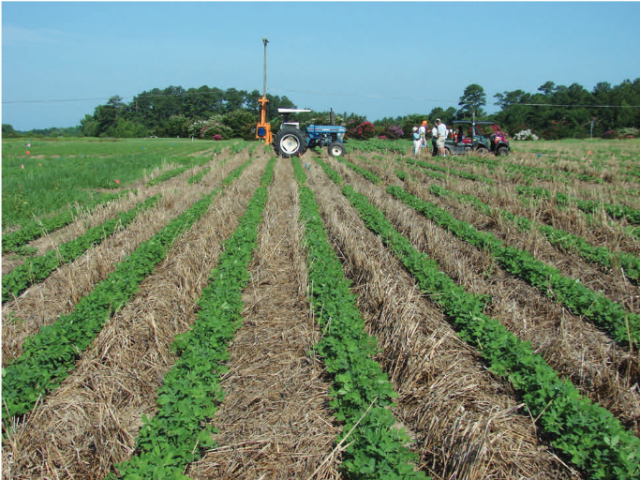
Soil calcium in the pegging zone of peanuts can be increased by adding gypsum at early bloom without raising soil pH. Credit: Glenn Harris
Area farmers have had numerous challenges to deal with already in this growing season. With so much rain over the past two weeks, many farmers have had their production schedule wrecked. Questions have been coming in about a wide range of crop issues, because wet fields have delayed management practices. One that has been repeated numerous times this week is, “What to do if you have not applied gypsum yet to your peanuts and your fields are still wet?”
Dr Glenn Harris, UGA Soil Specialist, makes the following suggestion related to answering this key question:
If you’re worried about missing a gypsum application due to all the rain this year, you should look at your soil Ca test results. UGA research shows that there is no yield response to additional Ca applications, if initial soil test levels are above 250 mg Ca/kg soil (same as ppm). However, if peanut seed is being grown, a gypsum application is needed regardless. Of course, it would be preferable to get a gypsum application down if you can.
Injection of CaCl during peak pod fill (60-90 days) is an option for peanuts under a pivot, if growers are concerned about replacing Ca leached out of the pegging zone. My recommendation is to apply 10 gal/a. In my research I applied it at 75 days after planting. It may not sound like a lot of Ca per acre, but unlike lime and gypsum it is 100 % available.

Gypsum should be applied to peanuts at this stage of growth, and is especially critical for non-irrigated peanuts. Photo by David Wright
- Four Early-Season Lessons from 2020 Peanut Production - April 9, 2021
- Sprayer Calibration Tables – Calibration Made Easy - October 30, 2020
- Stand Issues – Should You Replant Your Peanut Field? - May 15, 2020
